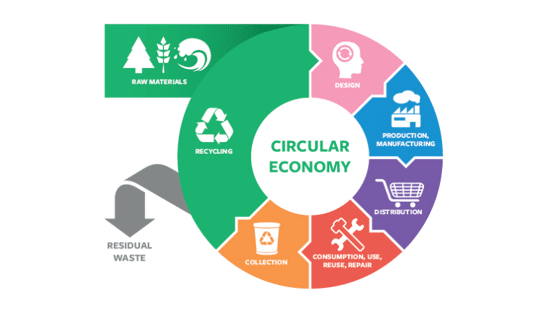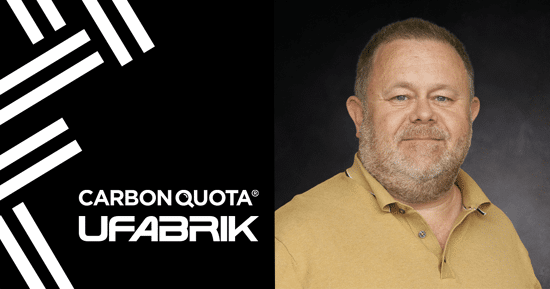How to make sustainable changes to your business by thinking globally and acting locally
.jpg?width=750)
Clare Taylor shares small changes and suggestions that businesses can make to improve their environmental impact. These include improving resource and energy efficiency, working with supply chains, preventing pollution and more.
Back in the seventies, ‘think global, act local’ was the environmental mantra. Problems were huge and global, and those taking action just didn’t have the heft to address them.
This was before the 1987 Brundtland Report, with its now well-known definition of sustainable development, and long before Rio, the Earth Summit in 1992 that saw the establishment of United Nations Framework Convention on Climate Change (UNFCCC), agreement of the Climate Change Convention and Convention on Biological Diversity, and the creation of the Rio Declaration on Environment and Development, Agenda 21 (the forerunner of the United Nations Sustainable Development Goals) and the Forest Principles.
Much has now changed: regular meetings of global governments, long-term strategies for sustainability, and there is far more legislation, often seeming burdensome but necessary to protect us and the planet. Many readers will be too young to remember catastrophes such as Love Canal, a residential area in the US where thousands of people died, suffered birth defects or became seriously ill until, in 1978, it was finally discovered that toxic chemicals were leaking from a landfill site; or Bhopal, where again thousands of people were killed, this time by the escape of toxic gas from a Union Carbide pesticide plant in 1984. Surrounding land and water were polluted, and flora and fauna killed. Both are events that could have been prevented by today’s environmental and safety legislation and site management requirements.
We’ve come a long way since then but not far enough, and so we see the headlines and feel helpless, wondering what sort of world our children and theirs are going to see. With modern communications we can see in real time the mayhem caused by pollution and climate change and can watch documentaries detailing the devastation to nature and species we rely upon for our existence. The issues are still very big, and we are all still very small. The concept of ‘think global, act local’ is still relevant now.
Simple actions can build a big change
The antidote to feeling helpless is to take action, and that’s where ‘think global, act local’ comes in. There is a lot a business can do internally: implementing programmes for resource and energy efficiency, using renewable energy, preventing pollution and working with supply chains. However, as well as doing what you can within your business, it is sometimes good to do something that everyone can join in with.
Looking at a global concern and doing what you can at local level not only makes a difference, but also lifts the spirits; if others are encouraged to join in, the ripple effect builds and so does the impact. Such action helps engage staff and make connections in the community. If possible, allowing staff members volunteering time, even for a short while, every month provides continuity within volunteer programmes.
This is, of course, not always possible, but you can still support staff and local groups in other ways. These might include sponsorship, perhaps by purchasing items of equipment, or offering use of your offices outside working hours as a place where local volunteers can meet, as climate resource hubs perhaps, or where citizen scientists can be trained and gather to compare information, or simply a space where litter-picking equipment can be stored and people can have a hot or cold drink when they’ve finished.
The best effect is from finding something that will improve where you are as well as addressing a global issue, and which is important to staff and other stakeholders. What works will obviously vary according to where you are, what’s already taking place and your local authorities. Working with local authorities to support their work increases the benefit and builds connections. Here are a few examples just as food for thought that can also involve staff volunteers or local schools.
Some ideas
If you’re particularly concerned about biodiversity or loss of pollinators, there may be scope for planting for pollinators, even in small areas; better yet, linking with others to create a pollinator pathway of ‘stepping stones’ across the locale to extend foraging areas. Planting and tending trees will also help with reducing some of the impacts of climate change – tending them until they are established is crucial as many fail in the first couple of years otherwise.
If air pollution is a concern, there may be opportunities for planting and tending green shields – hedges or green walls to absorb traffic emissions.
 A handheld device for measuring phosphate content in water samples. Image credit: Clare Taylor.
A handheld device for measuring phosphate content in water samples. Image credit: Clare Taylor.
To support rivers and seas, if litter pollution is a local issue, organising regular litter picks helps. To do more, if you are in an area where water pollution and lack of oversight are an issue, there may be local citizen science monitoring activities that could be joined, such as taking water samples and measuring chemical content or counting river fly larvae. Visual monitoring of outfalls is also useful, and restoration work, such as planting reed beds.
Working with local groups enables connectivity and reporting across a river catchment to identify pollution sources and quantify benefits from interventions.
Supporting staff volunteering is part of the social element of sustainability, especially if it involves physical activity in green spaces, as this is known to improve wellbeing.
It’s also useful to spread the word: talk about what you’re doing, how you started, how it works. Inspire others to do the same – and create ripples out to make ‘local’ join up and become ‘global’.
Recent news

Kodak's 2024 Sustainability Report: A Commitment to a Greener Future
Kodak's 2024 Sustainability Report, "One World, One Kodak," demonstrates a strong commitment to environmental and social responsibility. The report highlights impressive reductions in greenhouse gas emissions (56%) and water withdrawal (31%) and aims for zero waste by 2025. Notably, Kodak is pioneering double materiality assessment in the printing industry, aligning sustainability with financial reporting, and showcasing its products' environmental benefits.

How can printers lower costs on energy usage?
Clare Taylor outlines simple steps for businesses to achieve energy sustainability, focusing on cost savings and staff comfort. It emphasises starting with measuring energy consumption to identify key areas for improvement. Subsequent steps involve managing energy use through behavioral changes and low-cost interventions, like optimizing cooling settings and ensuring equipment is switched off when not needed.

The European Union's circular economy plan
Printing companies must understand the EU's Circular Economy Action Plan (CEAP), part of the European Green Deal. These initiatives drive sustainability, impacting businesses globally, even if not EU-based, through customer requirements. Printers need to be aware of reporting and sustainability expectations to manage risks and retain clients.

A revised look at sustainability in wide format print
Sustainability is crucial for wide-format print, moving beyond marketing to an imperative driven by brands and regulations. Common "eco" claims often mask complexities; true sustainability demands carbon reduction as a core principle. Life Cycle Assessment (LCA) offers data-driven insights for genuine environmental improvement, as demonstrated by UFABRIK's transparent approach.